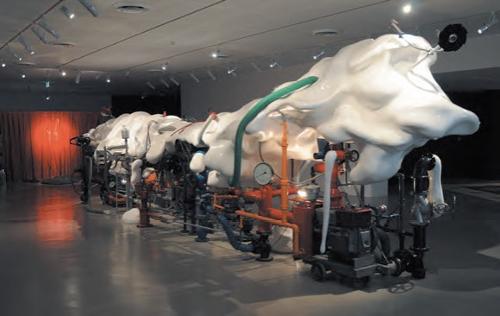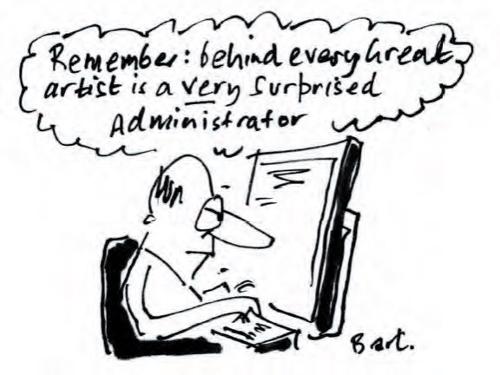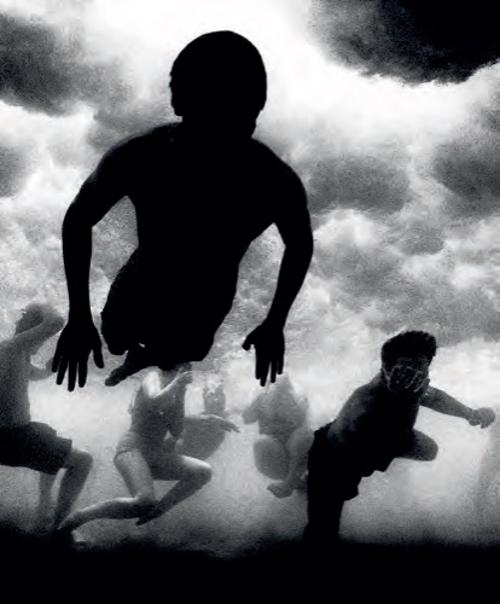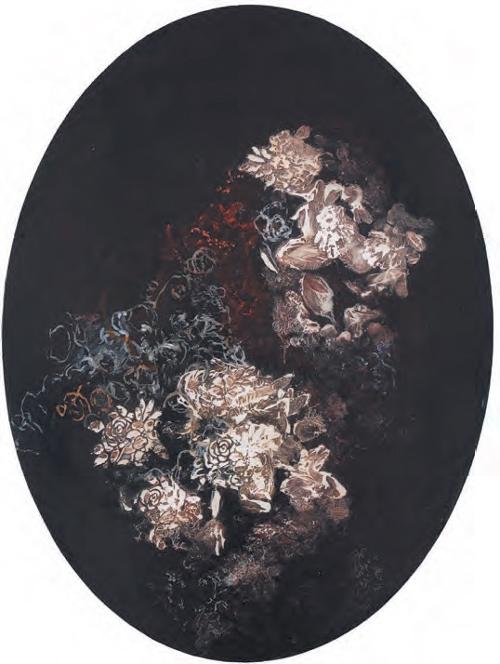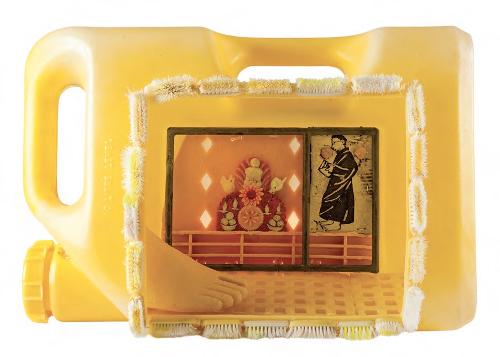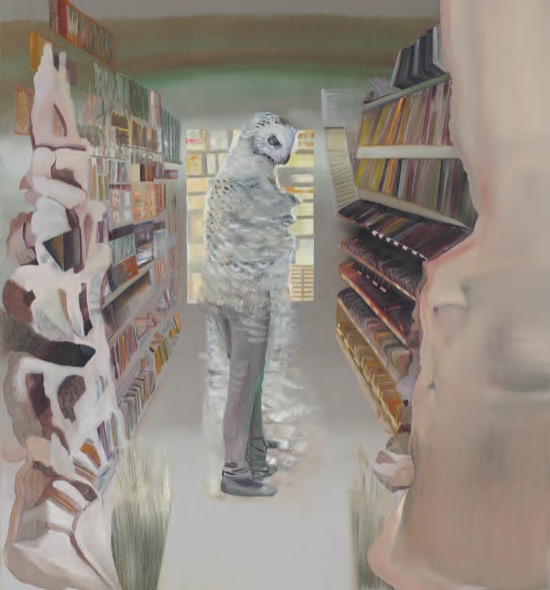
Madeleine Kelly's solo exhibition included eight large and four smaller paintings, and a light installation, a recent departure for her practice. Rendered in a muted palette of purples, yellows, greys and greens her paintings show otherworldly landscapes, interiors with huddled figures, underground mineral caverns, hybrid creatures and flooded houses beneath a striated sky. Poetic and allusive, the paintings demonstrated the artist’s dexterous line work and her ability to create seamless surfaces through the application of thin washes of paint. Visually and thematically this was a coherent and strong exhibition, and indicated a new direction for the artist.
Kelly is a young Brisbane artist who has received some recognition for her semi-narrative, surrealistic paintings which draw on personal and mythological sources to create archaeological investigations into contemporary and enduring issues. In 2005 her work was featured in 'Primavera' the MCA’s prestigious national showcase of new art, and a major touring survey project is planned for 2011-12. Although contemporary ecological issues are a concern (including the burning of fossil fuels) Kelly is never didactic, relying on metaphor and allusion to convey complex visual formulations.
Kelly chose the title 'The Crevice' for her exhibition, and this natural formation also provided the subject for a number of paintings and her installation. A crevice is a fissure in the landscape, and the word comes from the Latin root "to break, burst or crack". It suggests imminent transformation or collapse, but also passage to a mysterious or unknown location. Kelly’s crevices were directly inspired by her experiences amid the Kimberley region landscapes of Western Australia. The crevice performs a number of functions: it allows her to introduce an anthropomorphic verticality which inverts the tradition of horizontal formats prevalent in the Australian landscape tradition. It also suggests the cultural structures which enclose us and dictate our path, and, as a common art historical trope, indicates a womb-like and primordial space. Kelly comments “the crevice seemed a fecund metaphorical site to broach a number of concerns, in particular, how I might signify contemporary consumer culture in a way that suggested an archaeology of being”.
On entering the exhibition, the viewer walked physically through a crevice in the form of a light installation piece. A cathedral-like structure 'Erscheinen (to appear)' (2010) was constructed with the prosaic materials of foamcore, LED light and a constellation of pinpricks to create exquisite illuminated 'drawings’.
In the larger paintings, the form of the crevice was frequently repeated. In 'Protean' world it was populated by human figures and strange petrified beings, a Freudian couch, staircases that lead nowhere, the detritus of everyday life. In 'Dream weapon' it became horizontal and overgrown with inorganic crystal facets; in 'Gathering as usual' and 'Binary love' it haunted the edges of the composition, threatening the ordered and composed world. Kelly’s characteristic hybrid creatures also appeared in these works.
The supermarket formed an unlikely second site or locus of meaning in this work, creating an initial contrast between the prosaic, transitory and fluctuating space of consumer culture with the primordial or pre-industrial crevice landscapes. However, these two sites were not discrete, but frequently overlapped and intersected. Kelly comments that visiting the supermarket is a contemporary “mode of hunting and gathering” that we all share. She sees the supermarket shelf with its colourful produce as a graph or language board of contemporary life - making it the ideal construct for an archaeology of knowledge outside the larger discourses of history.
The word ‘protean’ (from the title of one of her paintings) is a term that means versatile, mutable, and capable of assuming many forms. It is one that characterises Kelly’s practice as a whole. She has written elsewhere that her work is “an accumulation of ideas which fall across each other” and that she is “most interested in process and the corollary discovery of forms”. Myth, legend, scientific texts and diagrams, structuralist and post-structuralist theories of archaeology (by writers like Foucault and Lévi-Strauss), theories of psychology, the flotsam and jetsam of quotidian life and many other sources and references permutate and combine in her work. The play of these many signifiers creates art full of unexpected juxtapositions, intricate detail and suggestive metaphor, that rewards close scrutiny.

